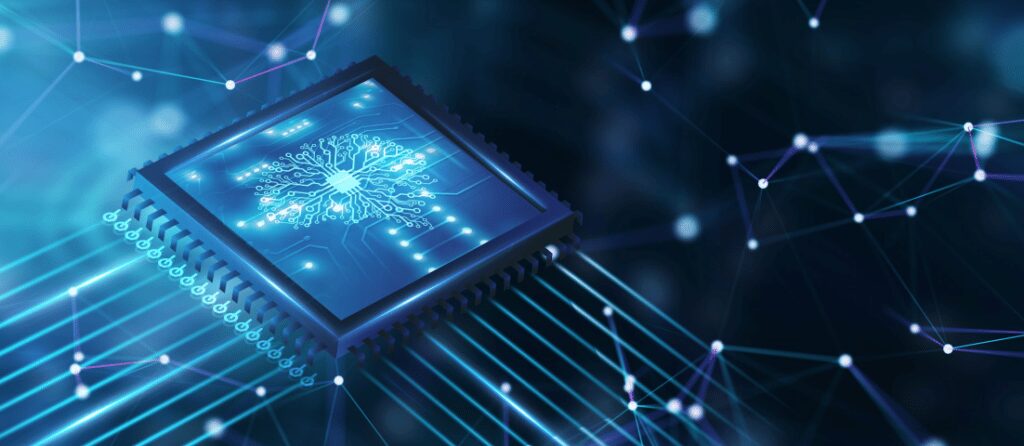Artificial Intelligence (AI) refers to the ability of computers to think like humans and perform similar tasks as people do. While computer scientists have yet to create a near-perfect AI that genuinely feels as a human being does, there are already AI applications that help improve day-to-day activities. You may take AI virtual assistants as a prime example. These applications help you do various tasks such as setting an appointment in your calendar, set an alarm, and more. These types of programs have helped individuals and businesses achieve better efficiency and productivity.
If you’ve heard of AI, you may have also heard about ML or machine learning. It’s a subtopic of AI focused on helping computers learn the same way humans do. People primarily develop machine learning applications by creating models that will guide how the computer thinks. ML models are based on labeled or unlabelled data that the computer scientist or software engineer feeds.
If you want to further learn about machine learning, then you must understand the two main types of machine learning—supervised and unsupervised machine learning. Supervised machine learning essentially involves more human intervention, unlike unsupervised machine learning.
In this article, you’ll learn more about unsupervised machine learning.

- Algorithms
Unsupervised machine learning involves three main tasks: clustering, dimensionality reduction, and association rules. Within these tasks, specific algorithms are used according to the needs of the job or project. That said, here are brief explanations of each main task used in unsupervised machine learning:
- Clustering
Clustering is a technique used for data mining wherein unlabelled data are grouped according to their similarities or differences. To learn more about this method, you may read this guide to clustering algorithms. That said, below are some of the algorithms used to perform this task:
- K-Means Clustering
This is an instance of exclusive clustering and is often used in market segmentation and image compression. It first identifies the ‘k’ number of centroids. A centroid refers to the imaginary or actual location of the center of a cluster. From there, data points are grouped according to the closest centroid.
- Hierarchal Clustering
There’re two kinds of this algorithm: agglomerative and divisive, with the former initially isolating data points into separate groups. Then they are merged iteratively based on similarity until a cluster is achieved. Meanwhile, it’s the opposite for divisiveness, with clusters being made out of differences.
- Probabilistic Clustering
Data points are clustered based on how likely they are to be a part of a particular distribution. The Gaussian Mixture Model (GMM) is the most commonly used method.
- Dimensionality Reduction
Dimensionality reduction involves reducing the number of dimensions or features in a given dataset in the event that it’s too large. For this, the following algorithms are used:
- Principal Component Analysis (PCA)
This algorithm is used to lessen the redundancies in a dataset with a large volume using feature extraction.
- Single Value Decomposition (SVD)
On the other hand, SVD factorizes a matrix denoted with the letter ‘A’ into three lower-ranking matrices.
- Autoencoders
Autoencoders take advantage of neural networks and find a way to create a new representation for the original data’s input. In doing so, this becomes useful for compressing data.
- Association Rules
Association rules focus on finding the relationships between the variables within a given dataset. This has been found to be very helpful in marketing to understand customers’ consumption habits. However, it can be used for recommendation systems too.
For this task, the apriori algorithm is used. Online retailers use this to personalize the shopping experience of consumers online. Aside from e-commerce stores, streaming platforms also use this technology to recommend media content that the user would probably like.
This algorithm is used in transactional datasets. From that, platforms try to determine the likelihood that a user will buy a particular item based on their consumption or purchase of another product.
- Applications
Having established the difference between supervised and unsupervised machine learning, you may want to learn about the applications of unsupervised machine learning. Knowing some applications may help you decide if unsupervised machine learning is for your project.
Unsupervised machine learning is often used for projects involving large volumes of unlabeled data that help companies and developers gain new insight from the dataset. They can be used in the following:
- Recommendation systems
- Customer segmentation
- Anomaly detection
- Segmentation of products
- Preparing data for supervised machine learning as you can use unsupervised to label the data for you
Advantages and Disadvantages
Like any other method, unsupervised machine learning has its share of advantages and disadvantages.
Advantages
- Helps with handling large volumes of data
- No expertise is required initially
- It may be considered time-efficient as you don’t need to spend time labelilng the data.
Disadvantages
- Outliers may cause results to vary
- High risk for computer mislabeling data
- You’ll need an expert on the subject to interpret the results
Concluding thoughts…
AI and ML are becoming prominent fields of study in computers and data analysis for businesses and consumers. To better understand how ML works, it is best to study its two main types first—supervised and unsupervised machine learning.
This guide has dwelled on the basics of unsupervised machine learning. As you can probably tell, you can encounter unsupervised machine learning whenever you’re shopping online or looking for new shows and movies to watch.



